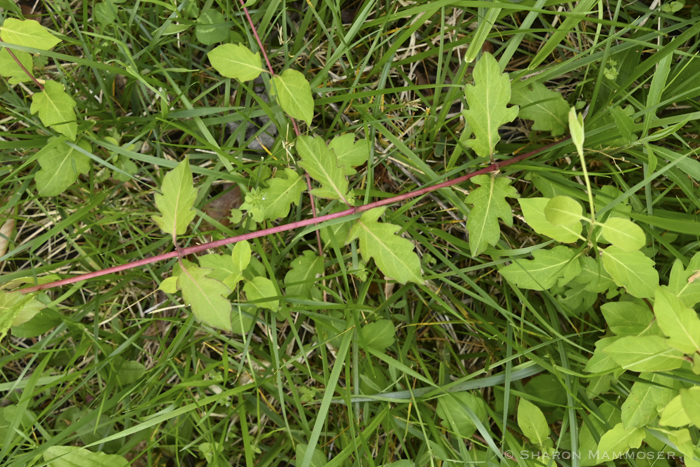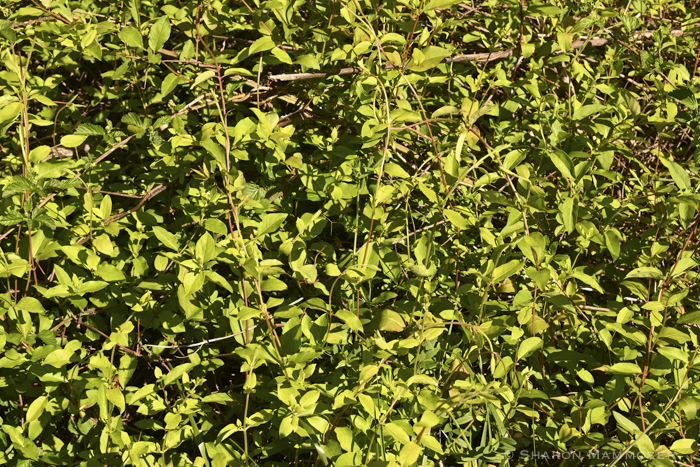I had never seen the vine in last week’s puzzler until recently when it showed up in my yard, low to the ground where my trillium and violets bloom, in the shade of some rhododendron. It looked attractive, with its red stem and oak-like leaves. Like is often the case, I had to turn to the internet to identify it, which these days is surprisingly easy. Did you recognize it?

It is Japanese Honeysuckle, (Lonicera japonica), an aggressive vine native to eastern Asia and introduced to the United States in 1806 as an ornamental plant. These days it can be found in many States, including all the eastern and southern states, all the way west to California.
Japanese Honeysuckle is what’s known as a non-native invasive. That is, it isn’t endemic to the United States, grows and reproduces quickly, spreads aggressively, and can cause harm or damage. (As a side note, it is possible for a species to be native AND invasive, such as in the case of the Lake Trout from the Great Lakes showing up in Yellowstone Lake in Wyoming)
“So what’s the big deal,” some might say, “Why does it matter that it is non-native?” Well aside from habitat loss, invasive species are the second leading cause of loss of biodiversity. The more plants and animals a place has, the healthier it is. Invasive plants displace the native species of an area. Invasive species often lack predators to keep them in check. Invasive plants often grow much faster and are more aggressive than the natives and so in a short period of time, they can take over an area, or change it completely. Invasive species, be those plants or animals, can have severe financial or human-health-related consequences (for example Fire Ants or Burmese Pythons.)
Often people will knowingly choose an invasive plant (think Burning Bush) saying “What’s the big deal? I’m planting it in my yard, for my benefit, how is that going to be a problem?” What they don’t know, or don’t want to know is that these invasives are not well-behaved plants that stay where you put them. Even if they prune them and keep them “in check,” they can’t control where the birds, wind or other animals take the seeds. A plant in your yard can quickly move to the nearby forest, field, or neighbor’s yard, and once these plants get started in an area, and then go unchecked for a while, they are prone to taking over.
Japanese Honeysuckle is a non-native, invasive plant that can quickly spread on top of native vegetation, especially at the edges where field and forests meet. In an area of land owned by Conserving Carolina where I monitor bluebird boxes, Japanese Honeysuckle has completely covered the vegetation beside an old trail for as far as the eye can see.

Let’s do another non-native invasive puzzler–Weekly Puzzler #209. Check it out and see if this is one you know.
Stay safe, be well, and have a good weekend! See you again soon.


Good post Hon
Thanks for always reading. I appreciate you!